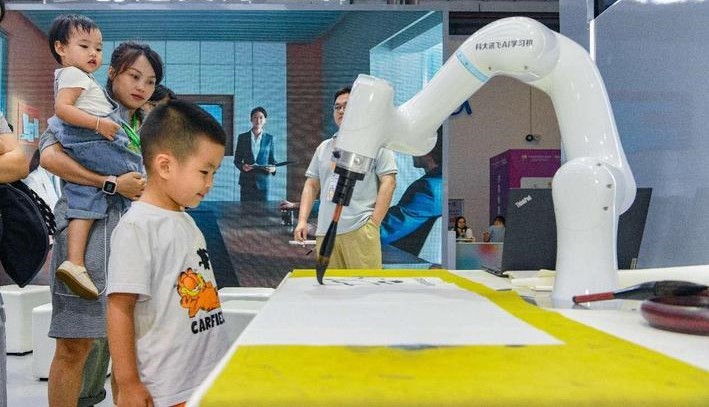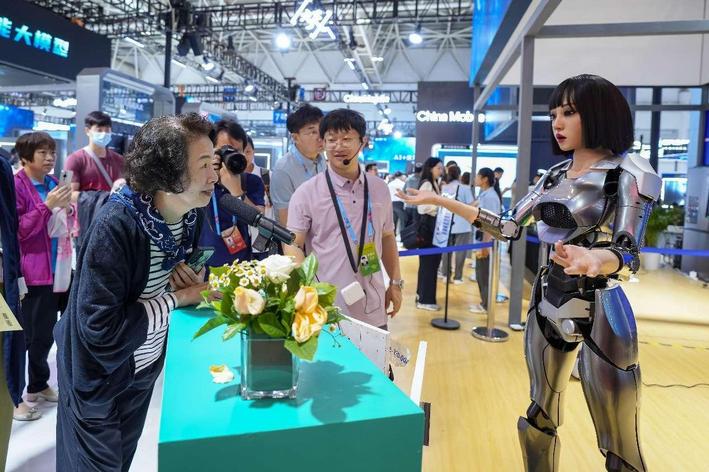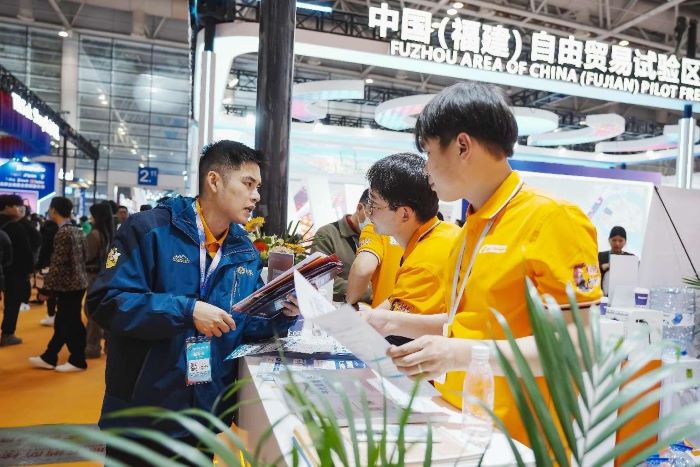Robots showcase cutting-edge capabilities at 2025 World Robot Conference

Agency : From Aug. 8 to 12, the 2025 World Robot Conference (WRC) was held in Beijing under the theme "Making Robots Smarter, Making Embodied Agents More Intelligent." The event brought together over 200 robotics companies from around the world, presenting more than 1,500 exhibits and debuting over 100 new products.
This robotics extravaganza, appealing to both professionals and the general public, offered an important window into the latest technological breakthroughs and industrial robotic trends in China and around the world.
"Start working!" In the exhibition area of the Beijing Humanoid Robot Innovation Center, a single voice command issued through the general embodied intelligence platform "Hui Si Kai Wu" simultaneously initiated four tasks: power line inspection, assembly line sorting, parts quality inspection, and package sealing. Robots executed the assignments collaboratively and with precision.
"We have overcome the limitations of traditional industrial automation, which was limited to 'one machine, one task, fixed process,' and have demonstrated the evolution from individual intelligence to collaborative, multi-agent intelligence," said Tang Jian, chief technical officer of the center.
China is accelerating innovation in high-end complete machines, core components, and process software, achieving continuous breakthroughs in key technologies such as large-scale robotic models, intelligent collaborative control, human-machine interaction, and multimodal perception. Statistics show that in 2024, China accounted for two-thirds of global patent applications in the robotics sector.
At the booth of Chinese company Unitree Robotics, spectators gathered for a high-energy humanoid robot combat match. Contestants, newly upgraded G1 combat humanoids, executed side kicks, hooks, and combination punches, and quickly regained their footing after being knocked down.
"These robots are equipped with advanced dynamic balance algorithms that adjust motor responses in each joint in real time under external impact, enabling them to stand more firmly and recover faster," said Lian Yingying, marketing manager at Unitree Robotics.
Humanoid robots in China have advanced at a remarkable pace - progressing from stumbling steps to steady walking, then to high-speed running, consecutive backflips, and now competitive sparring.
"With the continuous improvement of AI control algorithms, Chinese-made humanoid robots can now respond to commands within milliseconds. Their stability, flexibility, and fluidity have all improved significantly, enhancing their athletic capabilities," said Xu Xiaolan, president of the Chinese Institute of Electronics.
According to Xin Guobin, vice minister of the Ministry of Industry and Information Technology, since the inaugural WRC in 2015, the global robotics industry has achieved leapfrog development, with intelligence levels rising rapidly, application boundaries expanding, and innovation resources converging at a faster pace. China has become the world's largest producer of robots, which are becoming a key driver of new quality productive forces and shaping a new, smarter way of life.
In the first half of this year, China's robotics industry revenue increased by 27.8 percent year on year, with industrial robot production and service robot output rising by 35.6 percent and 25.5 percent, respectively. China has also been the world's largest industrial robot application market for 12 consecutive years, with 2024 sales of industrial robots reaching 302,000 units.
Elsewhere at the conference, a robotic arm developed by Chinese embodied artificial intelligence startup Spirit AI deftly folded a crumpled garment, shaking it straight, laying it flat, and folding each side neatly within seconds.
"While folding clothes may look simple, it actually requires precise, long-range manipulation of soft materials - a capability with broad application prospects," said Xie Junyuan, head of the embodied intelligence division at Spirit AI.
Robots on display this year were not merely demonstrating technical prowess but showcasing enormous potential for real-world applications.
In industrial settings, for instance, 11 Walker S1 robots from UBTECH Robotics collaborated on-site to identify items, coordinate tasks, and sort them with efficiency. According to the company, UBTECH plans to deliver 500 industrial humanoid robots this year for deployment in smart manufacturing.
In scientific and technological research, Monte 02, an embodied intelligent robot developed by Corenetic AI, simulated laboratory operations including sampling, transfer, and testing. "Our goal is to build the next generation of automated laboratories, freeing researchers from repetitive tasks," said Lian Wenzhao, founder of Corenetic AI.
In the services sector, the UP robots developed by Yunji Technology have been deployed in hotels, delivering packages in the morning, performing cleaning tasks at midday, and conducting security patrols at night, significantly boosting equipment utilization rates.
Today, industrial robots serve 71 major industry categories and 236 subcategories of China's national economy. The country's manufacturing robot density now ranks third in the world. According to International Data Corporation, in 2024, Chinese manufacturers dominated the global commercial service robot market, accounting for 84.7 percent of total shipments.
-By Pan Junqiang, Li Jianguang, People's Daily














प्रतिकृया दिनुहोस